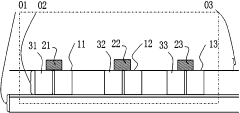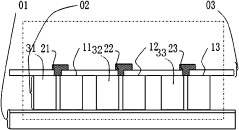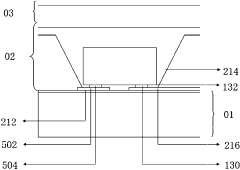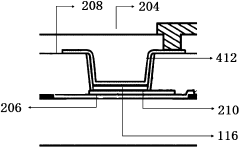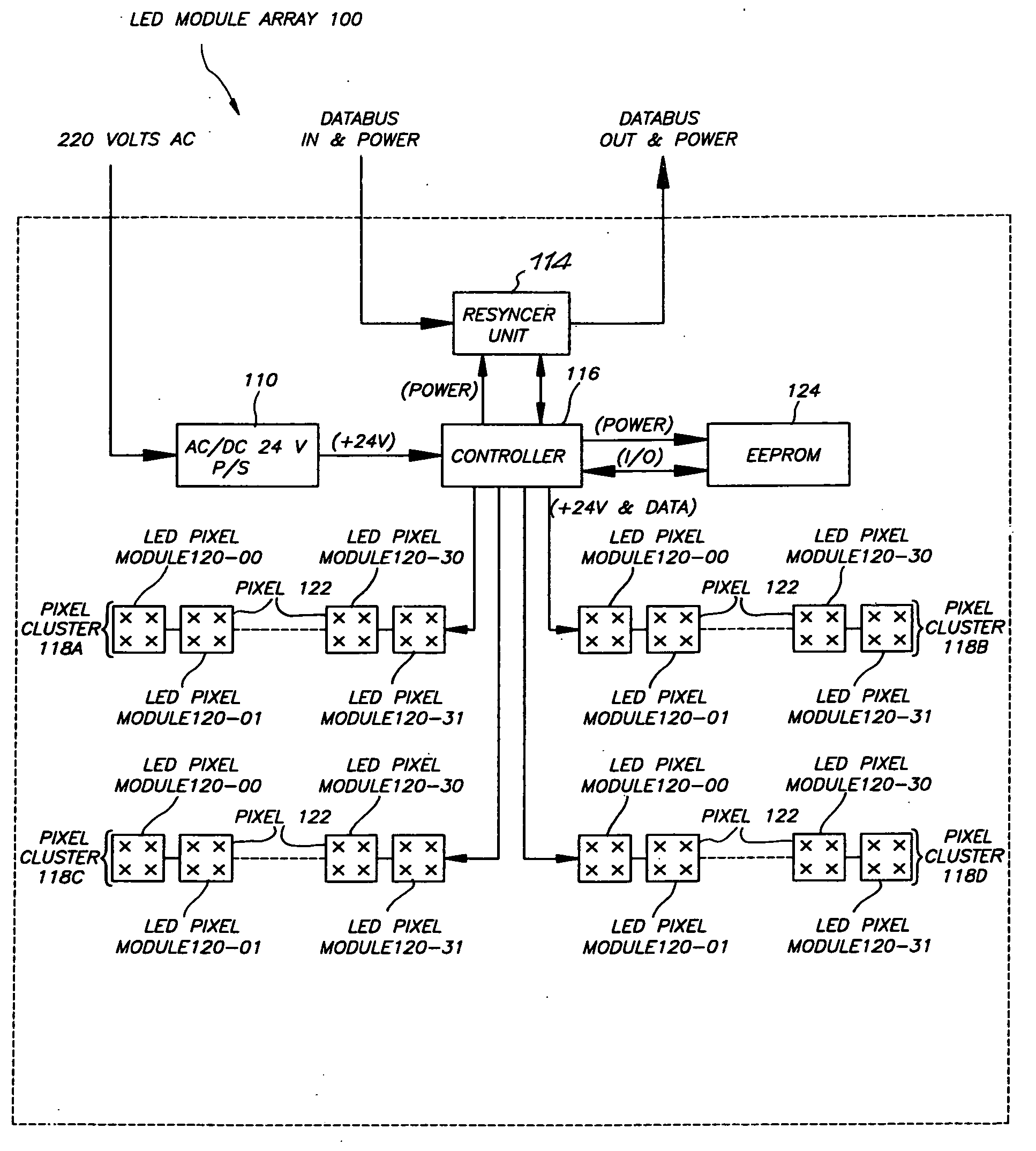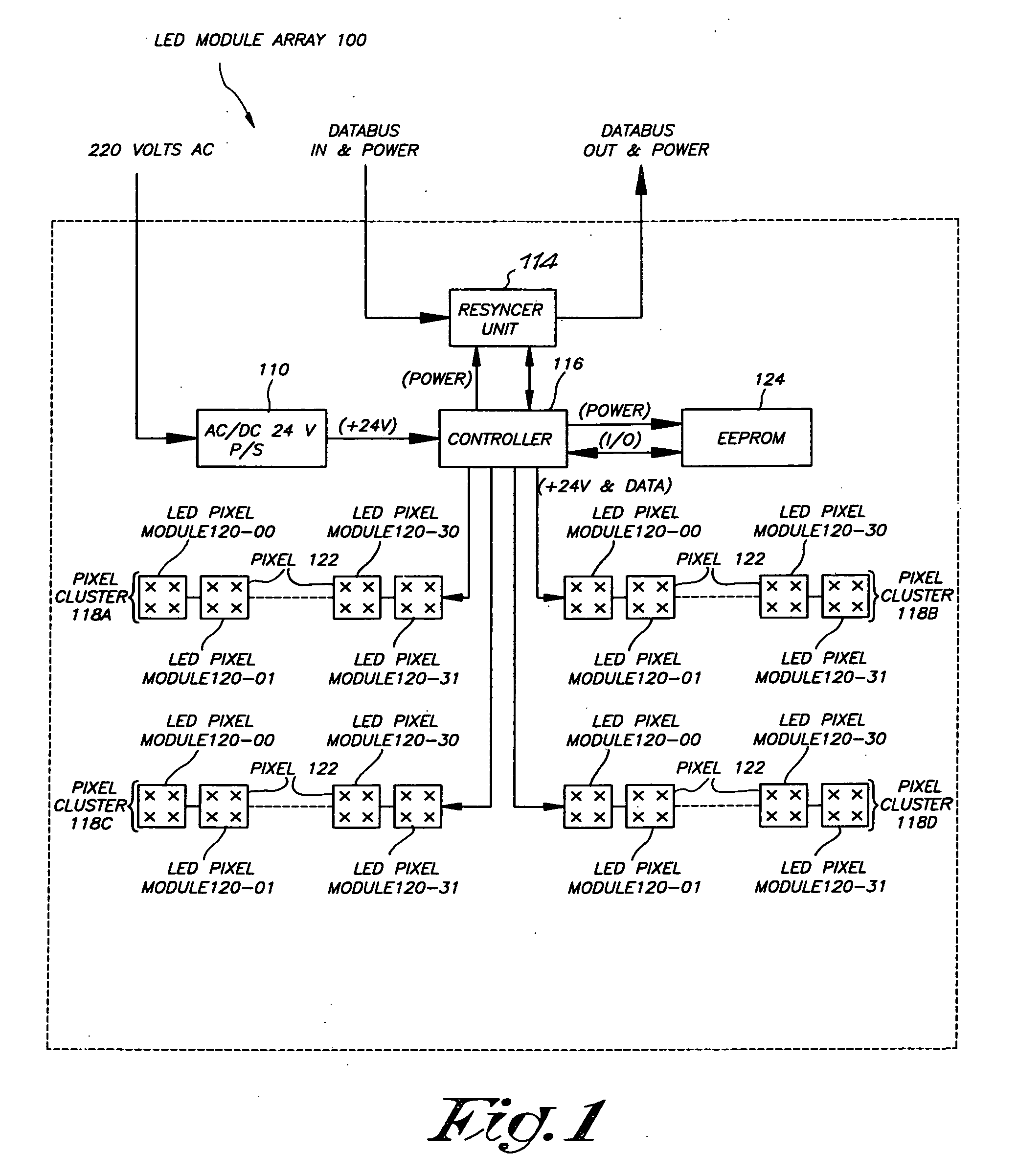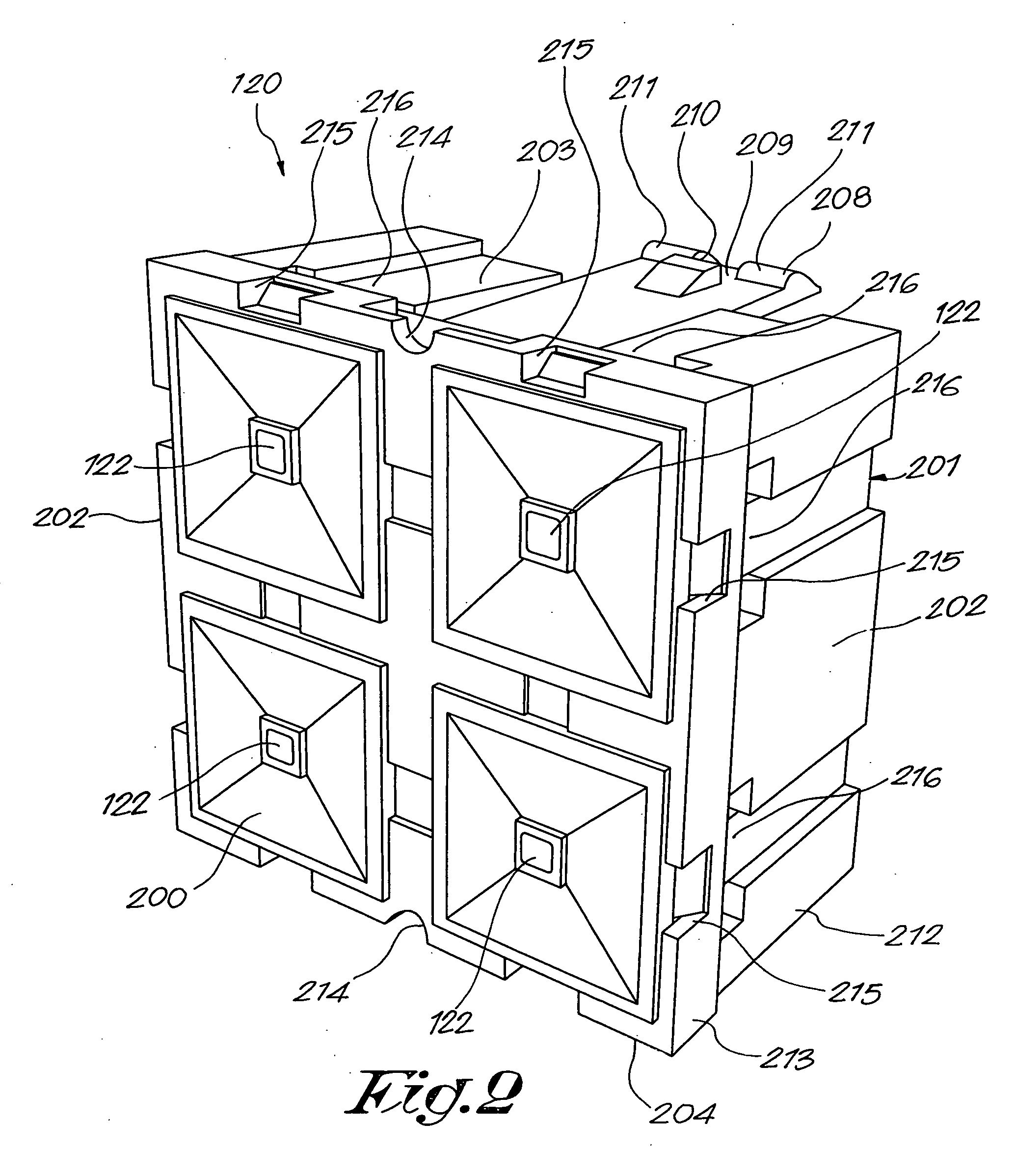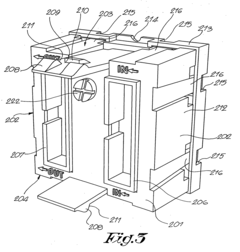Harnessing ULED for Commercial Signage Solutions
JUN 23, 20259 MIN READ
Generate Your Research Report Instantly with AI Agent
Patsnap Eureka helps you evaluate technical feasibility & market potential.
ULED Signage Evolution
The evolution of ULED (Ultra Light Emitting Diode) technology in commercial signage solutions has been marked by significant advancements and innovations over the past decade. Initially developed as an improvement over traditional LED displays, ULED has rapidly gained traction in the digital signage industry due to its superior brightness, color accuracy, and energy efficiency.
In the early stages of ULED adoption, the technology primarily focused on enhancing picture quality and reducing power consumption. Manufacturers concentrated on increasing the number of local dimming zones and improving backlight control, resulting in deeper blacks and more vibrant colors. This phase saw the introduction of ULED displays with higher contrast ratios and wider color gamuts, setting new standards for visual performance in commercial signage.
As the technology matured, the focus shifted towards scalability and flexibility. ULED modules became more modular and easier to integrate into various form factors, allowing for the creation of custom-sized displays and seamless video walls. This development opened up new possibilities for creative signage applications in retail, hospitality, and public spaces.
The next significant milestone in ULED evolution was the integration of smart features and connectivity options. Displays began incorporating built-in processors, enabling advanced content management and real-time analytics. This shift towards "smart signage" allowed businesses to deliver more targeted and interactive content, enhancing customer engagement and providing valuable insights into viewer behavior.
Recent years have seen a focus on sustainability and durability in ULED signage solutions. Manufacturers have made strides in reducing the environmental impact of these displays through improved energy efficiency, longer lifespans, and the use of more eco-friendly materials. Additionally, advancements in weatherproofing and thermal management have expanded the potential applications of ULED technology in outdoor and harsh environments.
The latest frontier in ULED signage evolution is the integration of AI and machine learning capabilities. These technologies are being leveraged to optimize content delivery, automate maintenance processes, and enhance the overall user experience. AI-powered ULED displays can now adapt to ambient lighting conditions, adjust content based on viewer demographics, and even predict potential hardware failures before they occur.
Looking ahead, the ULED signage industry is poised for further innovation. Emerging trends include the development of transparent and flexible ULED displays, which could revolutionize how digital signage integrates with physical spaces. Additionally, research into micro-LED technology promises to bring even higher resolutions and more efficient power consumption to ULED displays, potentially opening up new markets and applications for commercial signage solutions.
In the early stages of ULED adoption, the technology primarily focused on enhancing picture quality and reducing power consumption. Manufacturers concentrated on increasing the number of local dimming zones and improving backlight control, resulting in deeper blacks and more vibrant colors. This phase saw the introduction of ULED displays with higher contrast ratios and wider color gamuts, setting new standards for visual performance in commercial signage.
As the technology matured, the focus shifted towards scalability and flexibility. ULED modules became more modular and easier to integrate into various form factors, allowing for the creation of custom-sized displays and seamless video walls. This development opened up new possibilities for creative signage applications in retail, hospitality, and public spaces.
The next significant milestone in ULED evolution was the integration of smart features and connectivity options. Displays began incorporating built-in processors, enabling advanced content management and real-time analytics. This shift towards "smart signage" allowed businesses to deliver more targeted and interactive content, enhancing customer engagement and providing valuable insights into viewer behavior.
Recent years have seen a focus on sustainability and durability in ULED signage solutions. Manufacturers have made strides in reducing the environmental impact of these displays through improved energy efficiency, longer lifespans, and the use of more eco-friendly materials. Additionally, advancements in weatherproofing and thermal management have expanded the potential applications of ULED technology in outdoor and harsh environments.
The latest frontier in ULED signage evolution is the integration of AI and machine learning capabilities. These technologies are being leveraged to optimize content delivery, automate maintenance processes, and enhance the overall user experience. AI-powered ULED displays can now adapt to ambient lighting conditions, adjust content based on viewer demographics, and even predict potential hardware failures before they occur.
Looking ahead, the ULED signage industry is poised for further innovation. Emerging trends include the development of transparent and flexible ULED displays, which could revolutionize how digital signage integrates with physical spaces. Additionally, research into micro-LED technology promises to bring even higher resolutions and more efficient power consumption to ULED displays, potentially opening up new markets and applications for commercial signage solutions.
Market Demand Analysis
The market demand for ULED (Ultra Light Emitting Diode) technology in commercial signage solutions has been experiencing significant growth in recent years. This surge is primarily driven by the increasing need for high-quality, energy-efficient, and visually striking displays in various commercial settings.
The retail sector has emerged as a key driver of ULED adoption in signage solutions. Retailers are constantly seeking innovative ways to attract customers and enhance their in-store experiences. ULED displays offer superior brightness, color accuracy, and contrast ratios compared to traditional LED displays, making them ideal for creating eye-catching product showcases and promotional displays. This has led to a growing demand for ULED-based digital signage in shopping malls, department stores, and boutique shops.
Another significant market segment driving ULED demand is the hospitality industry. Hotels, restaurants, and entertainment venues are increasingly utilizing ULED displays for wayfinding, menu boards, and immersive visual experiences. The ability of ULED technology to deliver vibrant and clear images even in brightly lit environments makes it particularly suitable for these applications.
The transportation sector has also shown a strong interest in ULED technology for commercial signage. Airports, train stations, and bus terminals are adopting ULED displays for information boards, advertising, and digital wayfinding systems. The high visibility and durability of ULED displays make them well-suited for these high-traffic environments.
Corporate environments represent another growing market for ULED signage solutions. Companies are investing in ULED displays for lobby areas, conference rooms, and employee communication systems. The sleek design and high image quality of ULED displays align well with corporate branding and communication needs.
The outdoor advertising industry is also contributing to the increasing demand for ULED technology. Billboard operators and outdoor media companies are transitioning to ULED displays to offer advertisers more dynamic and attention-grabbing platforms. The superior brightness and contrast of ULED displays ensure that outdoor advertisements remain visible and impactful even in challenging lighting conditions.
As smart city initiatives gain traction worldwide, there is a growing demand for ULED displays in public information systems. City planners and local governments are exploring ULED technology for digital kiosks, traffic information displays, and public safety announcement boards. The energy efficiency and long lifespan of ULED displays make them an attractive option for these applications.
The market demand for ULED in commercial signage solutions is expected to continue its upward trajectory in the coming years. Factors such as decreasing production costs, technological advancements, and increasing awareness of the benefits of ULED displays are likely to fuel this growth. As businesses across various sectors recognize the potential of ULED technology to enhance customer engagement and improve communication effectiveness, the adoption rate is projected to accelerate further.
The retail sector has emerged as a key driver of ULED adoption in signage solutions. Retailers are constantly seeking innovative ways to attract customers and enhance their in-store experiences. ULED displays offer superior brightness, color accuracy, and contrast ratios compared to traditional LED displays, making them ideal for creating eye-catching product showcases and promotional displays. This has led to a growing demand for ULED-based digital signage in shopping malls, department stores, and boutique shops.
Another significant market segment driving ULED demand is the hospitality industry. Hotels, restaurants, and entertainment venues are increasingly utilizing ULED displays for wayfinding, menu boards, and immersive visual experiences. The ability of ULED technology to deliver vibrant and clear images even in brightly lit environments makes it particularly suitable for these applications.
The transportation sector has also shown a strong interest in ULED technology for commercial signage. Airports, train stations, and bus terminals are adopting ULED displays for information boards, advertising, and digital wayfinding systems. The high visibility and durability of ULED displays make them well-suited for these high-traffic environments.
Corporate environments represent another growing market for ULED signage solutions. Companies are investing in ULED displays for lobby areas, conference rooms, and employee communication systems. The sleek design and high image quality of ULED displays align well with corporate branding and communication needs.
The outdoor advertising industry is also contributing to the increasing demand for ULED technology. Billboard operators and outdoor media companies are transitioning to ULED displays to offer advertisers more dynamic and attention-grabbing platforms. The superior brightness and contrast of ULED displays ensure that outdoor advertisements remain visible and impactful even in challenging lighting conditions.
As smart city initiatives gain traction worldwide, there is a growing demand for ULED displays in public information systems. City planners and local governments are exploring ULED technology for digital kiosks, traffic information displays, and public safety announcement boards. The energy efficiency and long lifespan of ULED displays make them an attractive option for these applications.
The market demand for ULED in commercial signage solutions is expected to continue its upward trajectory in the coming years. Factors such as decreasing production costs, technological advancements, and increasing awareness of the benefits of ULED displays are likely to fuel this growth. As businesses across various sectors recognize the potential of ULED technology to enhance customer engagement and improve communication effectiveness, the adoption rate is projected to accelerate further.
ULED Tech Challenges
Ultra-Light Emitting Diode (ULED) technology represents a significant advancement in display technology, offering numerous benefits for commercial signage solutions. However, as with any emerging technology, ULED faces several technical challenges that need to be addressed for widespread adoption and optimal performance in commercial applications.
One of the primary challenges is the scalability of ULED production. While ULED displays offer superior brightness and energy efficiency compared to traditional LED displays, manufacturing large-scale ULED panels with consistent quality and yield remains a significant hurdle. The intricate nature of ULED structures requires precise control over the fabrication process, which becomes increasingly difficult as panel sizes increase.
Color accuracy and uniformity present another technical challenge for ULED technology in commercial signage. Achieving a wide color gamut while maintaining color consistency across large display areas is crucial for creating visually appealing and effective signage. ULED displays must overcome issues related to color shift and degradation over time, especially in outdoor environments where they are exposed to varying light conditions and temperature fluctuations.
Thermal management is a critical concern for ULED displays, particularly in commercial signage applications where displays may operate continuously for extended periods. The high brightness capabilities of ULED technology can lead to increased heat generation, potentially affecting the longevity and performance of the display. Developing efficient heat dissipation mechanisms without compromising the slim form factor of ULED displays is a significant technical challenge.
Durability and lifespan are essential factors for commercial signage solutions. ULED technology must demonstrate long-term reliability and resistance to environmental factors such as humidity, dust, and temperature variations. Enhancing the robustness of ULED components and developing effective encapsulation techniques to protect against external elements are ongoing challenges in the field.
Power efficiency, while generally superior to traditional LED technology, still presents opportunities for improvement in ULED displays. Optimizing power consumption without sacrificing brightness and image quality is crucial for reducing operational costs and environmental impact in commercial signage applications.
Addressing these technical challenges requires collaborative efforts between researchers, manufacturers, and industry stakeholders. Ongoing research and development initiatives focus on improving ULED materials, refining manufacturing processes, and developing innovative solutions for thermal management and environmental protection. As these challenges are progressively overcome, ULED technology is poised to revolutionize the commercial signage industry, offering unparalleled visual experiences and operational benefits.
One of the primary challenges is the scalability of ULED production. While ULED displays offer superior brightness and energy efficiency compared to traditional LED displays, manufacturing large-scale ULED panels with consistent quality and yield remains a significant hurdle. The intricate nature of ULED structures requires precise control over the fabrication process, which becomes increasingly difficult as panel sizes increase.
Color accuracy and uniformity present another technical challenge for ULED technology in commercial signage. Achieving a wide color gamut while maintaining color consistency across large display areas is crucial for creating visually appealing and effective signage. ULED displays must overcome issues related to color shift and degradation over time, especially in outdoor environments where they are exposed to varying light conditions and temperature fluctuations.
Thermal management is a critical concern for ULED displays, particularly in commercial signage applications where displays may operate continuously for extended periods. The high brightness capabilities of ULED technology can lead to increased heat generation, potentially affecting the longevity and performance of the display. Developing efficient heat dissipation mechanisms without compromising the slim form factor of ULED displays is a significant technical challenge.
Durability and lifespan are essential factors for commercial signage solutions. ULED technology must demonstrate long-term reliability and resistance to environmental factors such as humidity, dust, and temperature variations. Enhancing the robustness of ULED components and developing effective encapsulation techniques to protect against external elements are ongoing challenges in the field.
Power efficiency, while generally superior to traditional LED technology, still presents opportunities for improvement in ULED displays. Optimizing power consumption without sacrificing brightness and image quality is crucial for reducing operational costs and environmental impact in commercial signage applications.
Addressing these technical challenges requires collaborative efforts between researchers, manufacturers, and industry stakeholders. Ongoing research and development initiatives focus on improving ULED materials, refining manufacturing processes, and developing innovative solutions for thermal management and environmental protection. As these challenges are progressively overcome, ULED technology is poised to revolutionize the commercial signage industry, offering unparalleled visual experiences and operational benefits.
Current ULED Solutions
01 ULED structure for enhanced brightness
Ultra Light Emitting Diodes (ULEDs) are designed with specific structural features to improve brightness. These may include optimized chip designs, novel electrode configurations, and advanced packaging techniques that enhance light extraction and emission efficiency.- ULED structure for enhanced brightness: Ultra Light Emitting Diodes (ULEDs) employ advanced structural designs to achieve higher brightness levels. These designs may include optimized semiconductor layers, improved quantum well structures, and enhanced light extraction techniques. The structural improvements allow for more efficient electron-hole recombination and better light output, resulting in brighter ULEDs.
- Driving circuits for ULED brightness control: Specialized driving circuits are developed to control and enhance ULED brightness. These circuits may incorporate advanced current regulation, pulse-width modulation techniques, and temperature compensation to optimize ULED performance. By precisely controlling the electrical input, these circuits can maximize brightness while maintaining efficiency and longevity of the ULEDs.
- Thermal management for high-brightness ULEDs: Effective thermal management is crucial for maintaining high brightness in ULEDs. Various heat dissipation methods and materials are employed to prevent thermal degradation and ensure consistent light output. These may include advanced heat sinks, thermal interface materials, and active cooling systems designed specifically for high-power ULEDs.
- Optical designs for improved ULED brightness: Innovative optical designs are implemented to enhance ULED brightness and light distribution. These may include specialized lenses, reflectors, and light-guiding structures that maximize light extraction and focus the output. Advanced packaging techniques and materials are also used to improve overall luminous efficacy and perceived brightness of ULEDs.
- ULED array configurations for high-brightness applications: ULED arrays are designed and configured to achieve high brightness in various applications. These configurations may involve optimized spacing, interconnection, and power distribution among multiple ULEDs. Advanced control systems are also implemented to manage the brightness of individual ULEDs within the array, allowing for uniform and high-intensity light output across large areas or displays.
02 Driving circuits for ULED brightness control
Specialized driving circuits are developed to control and optimize ULED brightness. These circuits may incorporate advanced current regulation, pulse-width modulation techniques, and temperature compensation to achieve high brightness levels while maintaining efficiency and longevity.Expand Specific Solutions03 Thermal management for high-brightness ULEDs
Effective thermal management solutions are crucial for maintaining high brightness in ULEDs. This includes innovative heat sink designs, thermal interface materials, and active cooling systems to dissipate heat and prevent brightness degradation due to temperature increases.Expand Specific Solutions04 Optical enhancements for ULED brightness
Various optical technologies are employed to enhance ULED brightness. These may include micro-lens arrays, reflective coatings, and light-guiding structures that improve light extraction and directionality, resulting in higher perceived brightness.Expand Specific Solutions05 Advanced materials for high-brightness ULEDs
Research into advanced materials focuses on developing new semiconductor compounds, phosphors, and encapsulants that can significantly increase ULED brightness. These materials aim to improve quantum efficiency, color rendering, and overall light output of ULEDs.Expand Specific Solutions
Key ULED Players
The ULED technology for commercial signage solutions is in a growth phase, with increasing market adoption and technological advancements. The global market for digital signage is expanding rapidly, driven by the demand for high-quality, energy-efficient displays. Companies like Barco NV, Daktronics, Inc., and BOE Technology Group Co., Ltd. are at the forefront of ULED implementation, leveraging their expertise in display technologies. The technology's maturity is progressing, with firms such as Lumileds LLC and EPISTAR Corp. contributing to LED component development. Emerging players like Appotronics Corp. Ltd. and Micledi Microdisplays BV are pushing innovation in micro-LED technology, potentially revolutionizing the ULED landscape. As the technology matures, we can expect increased competition and further improvements in display quality, energy efficiency, and cost-effectiveness.
Daktronics, Inc.
Technical Solution: Daktronics has developed a proprietary ULED technology for commercial signage solutions. Their system utilizes ultra-high-definition LED modules with advanced color calibration and brightness control. The company's ULED displays feature a unique pixel layout that maximizes resolution while minimizing power consumption. Daktronics' solution also incorporates smart content management software that allows for real-time updates and scheduling of signage content across multiple displays. Their ULED technology is designed to deliver superior image quality and visibility in various lighting conditions, making it suitable for both indoor and outdoor applications.
Strengths: Superior image quality, energy efficiency, and versatility for various environments. Weaknesses: Potentially higher initial cost compared to traditional LED solutions and reliance on proprietary software for optimal performance.
Shenzhen AOTO Electronics Co., Ltd.
Technical Solution: AOTO Electronics has developed a ULED-based commercial signage solution that focuses on ultra-high contrast ratios and wide color gamut. Their technology utilizes micro-LED arrays with individual pixel control, allowing for precise light emission and deep blacks. AOTO's system incorporates advanced heat dissipation techniques to maintain consistent performance and longevity of the displays. The company has also integrated AI-powered content optimization algorithms that automatically adjust brightness and color settings based on ambient light conditions and viewing distance. AOTO's ULED signage solutions are designed to be modular, allowing for easy installation and maintenance in various commercial settings.
Strengths: Exceptional contrast and color reproduction, AI-enhanced content optimization, and modular design for easy maintenance. Weaknesses: Potentially complex installation process and higher cost compared to conventional LED displays.
ULED Core Innovations
ULED/OLED integrated light emitting body for display
PatentActiveCN108039359A
Innovation
- Using ULED and OLED combined light emitters, by forming an epitaxial barrier crystal film layer and pixel points on the substrate, using micro ULED and OLED to connect in parallel respectively, controlling the combination of micro inorganic light-emitting diodes and organic light-emitting diodes, and using gallium nitride materials to improve Light efficiency, and achieve efficient electrical connection through the electrical interface matrix layer and LED controller.
Display pixel module for use in a configurable large-screen display application and display with such pixel modules
PatentInactiveUS20050052374A1
Innovation
- A modular LED pixel design with tapered side and upper/lower walls for flexible mounting, featuring clips for angled installation and easy access from the front or rear, allowing for easy assembly and replacement of modules, and using a housing with assembly snaps and connectors for interconnection with other components.
Energy Efficiency Impact
The adoption of Ultra-Light Emitting Diode (ULED) technology in commercial signage solutions presents significant potential for energy efficiency improvements. ULED displays consume substantially less power compared to traditional LED and LCD alternatives, offering a compelling advantage in the context of rising energy costs and increasing environmental consciousness.
ULED technology achieves its superior energy efficiency through several key mechanisms. Firstly, the ultra-thin structure of ULED panels allows for more efficient light transmission, reducing the power required to produce equivalent brightness levels. Additionally, the advanced pixel architecture in ULED displays enables precise control over individual light-emitting elements, minimizing unnecessary power consumption in darker areas of the display.
The energy savings potential of ULED in commercial signage is particularly noteworthy. Large-scale digital billboards and storefront displays, which often operate continuously, can benefit greatly from the reduced power requirements of ULED technology. Studies have shown that ULED displays can achieve up to 50% reduction in energy consumption compared to conventional LED displays of similar size and brightness.
This improved energy efficiency translates directly into cost savings for businesses utilizing ULED signage. The reduced power consumption not only lowers electricity bills but also decreases the strain on electrical infrastructure, potentially reducing maintenance costs and extending the lifespan of supporting systems. Furthermore, the lower heat generation of ULED displays contributes to reduced cooling requirements in indoor environments, offering additional energy savings.
From an environmental perspective, the widespread adoption of ULED technology in commercial signage could lead to significant reductions in carbon emissions. As many regions transition towards renewable energy sources, the decreased power demand from ULED displays aligns well with sustainability goals and can contribute to businesses' efforts to reduce their carbon footprint.
The energy efficiency benefits of ULED extend beyond direct power consumption. The technology's ability to produce high-quality images with exceptional contrast and color accuracy means that signage can be equally effective at lower brightness levels, further reducing energy requirements without compromising visual impact.
As regulations around energy efficiency become more stringent globally, ULED technology positions businesses to stay ahead of compliance requirements. Many jurisdictions are implementing stricter standards for outdoor advertising and digital signage, making the energy-efficient characteristics of ULED an attractive option for future-proofing investments in commercial display infrastructure.
ULED technology achieves its superior energy efficiency through several key mechanisms. Firstly, the ultra-thin structure of ULED panels allows for more efficient light transmission, reducing the power required to produce equivalent brightness levels. Additionally, the advanced pixel architecture in ULED displays enables precise control over individual light-emitting elements, minimizing unnecessary power consumption in darker areas of the display.
The energy savings potential of ULED in commercial signage is particularly noteworthy. Large-scale digital billboards and storefront displays, which often operate continuously, can benefit greatly from the reduced power requirements of ULED technology. Studies have shown that ULED displays can achieve up to 50% reduction in energy consumption compared to conventional LED displays of similar size and brightness.
This improved energy efficiency translates directly into cost savings for businesses utilizing ULED signage. The reduced power consumption not only lowers electricity bills but also decreases the strain on electrical infrastructure, potentially reducing maintenance costs and extending the lifespan of supporting systems. Furthermore, the lower heat generation of ULED displays contributes to reduced cooling requirements in indoor environments, offering additional energy savings.
From an environmental perspective, the widespread adoption of ULED technology in commercial signage could lead to significant reductions in carbon emissions. As many regions transition towards renewable energy sources, the decreased power demand from ULED displays aligns well with sustainability goals and can contribute to businesses' efforts to reduce their carbon footprint.
The energy efficiency benefits of ULED extend beyond direct power consumption. The technology's ability to produce high-quality images with exceptional contrast and color accuracy means that signage can be equally effective at lower brightness levels, further reducing energy requirements without compromising visual impact.
As regulations around energy efficiency become more stringent globally, ULED technology positions businesses to stay ahead of compliance requirements. Many jurisdictions are implementing stricter standards for outdoor advertising and digital signage, making the energy-efficient characteristics of ULED an attractive option for future-proofing investments in commercial display infrastructure.
ULED Content Management
Content management is a critical aspect of harnessing ULED technology for commercial signage solutions. As ULED displays offer superior image quality and energy efficiency, effective content management systems are essential to maximize their potential in commercial applications.
ULED content management systems typically incorporate advanced software platforms that enable seamless content creation, scheduling, and distribution across multiple displays. These systems often feature intuitive user interfaces, allowing non-technical staff to easily manage and update content without extensive training.
One key feature of ULED content management is real-time content updating. This capability allows businesses to quickly adapt their messaging to changing circumstances, such as promotional offers, inventory updates, or emergency notifications. The high refresh rates and low latency of ULED displays make them ideal for displaying dynamic, frequently updated content.
Content optimization for ULED displays is another crucial aspect of management systems. These platforms often include tools for adjusting color profiles, brightness levels, and contrast ratios to ensure optimal visual performance across different lighting conditions and viewing distances. This is particularly important for outdoor signage applications where environmental factors can significantly impact display visibility.
Many ULED content management systems also incorporate advanced analytics capabilities. These tools provide valuable insights into viewer engagement, content performance, and display health. By analyzing metrics such as viewer dwell time, interaction rates, and display uptime, businesses can refine their content strategies and optimize their signage investments.
Integration with other business systems is a growing trend in ULED content management. Many platforms now offer APIs and connectors that allow seamless data flow between content management systems and other enterprise applications, such as customer relationship management (CRM) or point-of-sale (POS) systems. This integration enables more personalized and context-aware content delivery, enhancing the overall effectiveness of commercial signage solutions.
Remote management capabilities are increasingly important in ULED content management systems, especially for businesses with geographically dispersed signage networks. These features allow centralized control of multiple displays, enabling efficient content distribution, scheduling, and troubleshooting across large-scale deployments.
As ULED technology continues to evolve, content management systems are likely to incorporate more advanced features such as artificial intelligence-driven content optimization, predictive maintenance, and enhanced interactivity options. These developments will further enhance the value proposition of ULED displays in commercial signage applications, driving adoption across various industries.
ULED content management systems typically incorporate advanced software platforms that enable seamless content creation, scheduling, and distribution across multiple displays. These systems often feature intuitive user interfaces, allowing non-technical staff to easily manage and update content without extensive training.
One key feature of ULED content management is real-time content updating. This capability allows businesses to quickly adapt their messaging to changing circumstances, such as promotional offers, inventory updates, or emergency notifications. The high refresh rates and low latency of ULED displays make them ideal for displaying dynamic, frequently updated content.
Content optimization for ULED displays is another crucial aspect of management systems. These platforms often include tools for adjusting color profiles, brightness levels, and contrast ratios to ensure optimal visual performance across different lighting conditions and viewing distances. This is particularly important for outdoor signage applications where environmental factors can significantly impact display visibility.
Many ULED content management systems also incorporate advanced analytics capabilities. These tools provide valuable insights into viewer engagement, content performance, and display health. By analyzing metrics such as viewer dwell time, interaction rates, and display uptime, businesses can refine their content strategies and optimize their signage investments.
Integration with other business systems is a growing trend in ULED content management. Many platforms now offer APIs and connectors that allow seamless data flow between content management systems and other enterprise applications, such as customer relationship management (CRM) or point-of-sale (POS) systems. This integration enables more personalized and context-aware content delivery, enhancing the overall effectiveness of commercial signage solutions.
Remote management capabilities are increasingly important in ULED content management systems, especially for businesses with geographically dispersed signage networks. These features allow centralized control of multiple displays, enabling efficient content distribution, scheduling, and troubleshooting across large-scale deployments.
As ULED technology continues to evolve, content management systems are likely to incorporate more advanced features such as artificial intelligence-driven content optimization, predictive maintenance, and enhanced interactivity options. These developments will further enhance the value proposition of ULED displays in commercial signage applications, driving adoption across various industries.
Unlock deeper insights with Patsnap Eureka Quick Research — get a full tech report to explore trends and direct your research. Try now!
Generate Your Research Report Instantly with AI Agent
Supercharge your innovation with Patsnap Eureka AI Agent Platform!
